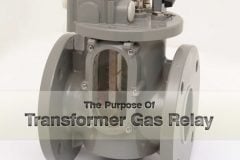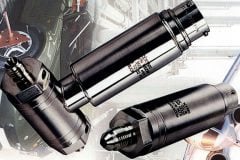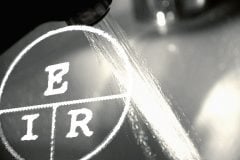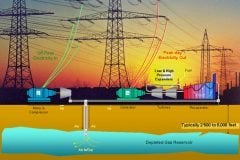
Compressed air is an essential form of energy for a hospital. Depending on the requirements it can be divided into:
– Medical compressed air and
– Technical compressed air
Medical compressed air
Medical compressed air has many uses in a hospital. Examples include assisted respiration for patients and driving surgical tools. Very strict requirements are imposed, not only on the compressed air itself but also on the equipment used for producing it.
- Production equipment must be redundant: if one compressor fails another must be able to meet the entire demand.
- Conditioning equipment must also be redundant.
- The air must be clean, tasteless and odourless.
- The system must be designed so that maintenance can be performed without compromising the redundancy.
- Other legal requirements are laid down by standard EN-12021.
In practical terms the pressure of the compressed air is another important factor. For surgical tools driven by compressed air a pressure of around 10 bar is frequently required.
Since the compressed air installation is already complex and costly because of the legal requirements, in many cases all the medical compressed air is produced at 10 bar, although such a high pressure is only needed for the surgical instruments.
Therefore it is important to realise that reducing the compressed air pressure by 1 bar yields an energy saving of around 6%.
Technical compressed air
Technical compressed air comprises all the other applications that do not have to meet the very strict requirements for medical compressed air. As such it is comparable with the compressed air found in industry, and is used for among other things to activate the HVAC control elements (valves and louvers), for workshop applications and keeping containers under pressure.
The temperature required for technical compressed air is 5 or 6 bar lower than for medical compressed air. From the energy point of view, it is desirable to make a distinction between medical and technical compressed air. In practice, however, it frequently happens that the systems are not separate, due to the relatively low consumption of compressed air and the complexity of the compressed air installations.
The following practical example looks at the advantages to be gained from separating the compressed air systems.
Case 1: Splitting up the compressed air network and using a frequency controlled compressor
Introduction
The hospital in this case is a medium-sized institution that uses both medical and technical compressed air.
Present situation
The present compressed air installation comprises three compressors of 37 kW each. These compressors produce all the compressed air, without any splitting up into medical and technical. The surgical instruments require a pressure of 11 bar, so that all the compressed air – both medical and technical – is produced at this pressure. The air is dried by absorption drying. The compressors make use of ON/OFF regulation, without any frequency regulation. The percentage of time at zero load is 45% on average. At zero load the compressors do not produce any compressed air, but they continue to consume up to 25% of their rated power.
For the purposes of this case study the following consumption figures are used:
- Annual consumption of medical compressed air : 142 000 Nm3/year
- Annual consumption of technical compressed air : 820 000 Nm3/year
Proposal
By splitting the compressed air network into medical and technical compressed air the technical part can be produced at a lower pressure of 6 bar, with lower quality requirements. It was also proposed to install an additional two compressors (one for each network), with frequency regulation, thus reducing the zero load consumption to a minimum.
Two of the present compressors were to be kept as a backup for the medical compressed air, in order to ensure the necessary redundancy. The third compressor was to be used to provide the baseload for the technical compressed air, with the frequency-controlled compressor dealing with the variations in compressed air consumption.
Estimated savings & investment
The savings were achieved by lowering the pressure, reducing the energy consumption at zero load and making savings on drying and cleaning the technical compressed air. The savings were calculated as follows:
Lowering the pressure of the technical compressed air:
| Annual consumption of technical compressed air : | 820 000 Nm3/year |
| Specific energy consumption at 11 bar : | 0.158 kWh/Nm3 |
| Specific energy consumption at 6 bar : | 0.107 kWh/Nm3 |
| Energy saving achieved by lowering the pressure : | 42 MWh/year |
Installing compressors with frequency regulation:
| Zero-load energy consumption with respect to total consumption : | 25 % |
| Consumption savings for 11 bar network at zero load : | 5.5 MWh/year |
| Consumption savings for 6 bar network at zero load : | 21.5 MWh/year |
| Total energy saving achieved by frequency regulation : | 27 MWh/year |
Savings on compressed air treatment:
| Total energy consumption for compressed air : | 152 MWh/year |
| Energy consumption of absorption air drying, as a percentage of the total compressed air energy consumption : | 25 % |
| Energy consumption of standard air drying, as a percentage of the total compressed air energy consumption : | 5 % |
| Present energy consumption for drying : | 30.5 MWh/year |
| New energy consumption for drying of the 11 bar network : | 5.6 MWh/year |
| New energy consumption for drying of the 6 bar net : | 4.4 MWh/year |
| Energy saving | 20.5 MWh/year |
The annual energy savings amount to 90 MWh/year, or a financial saving of €7200 per year. The investments comprise the purchase of two frequency regulated compressors of 12.5 and 37 kW respectively, purchase of a drier for the technical compressed air and making modifications to the compressed air network.
The estimated amount of the investment is € 40 000, resulting in a payback time of 5.5 years.











share related details
Nice post.well written.